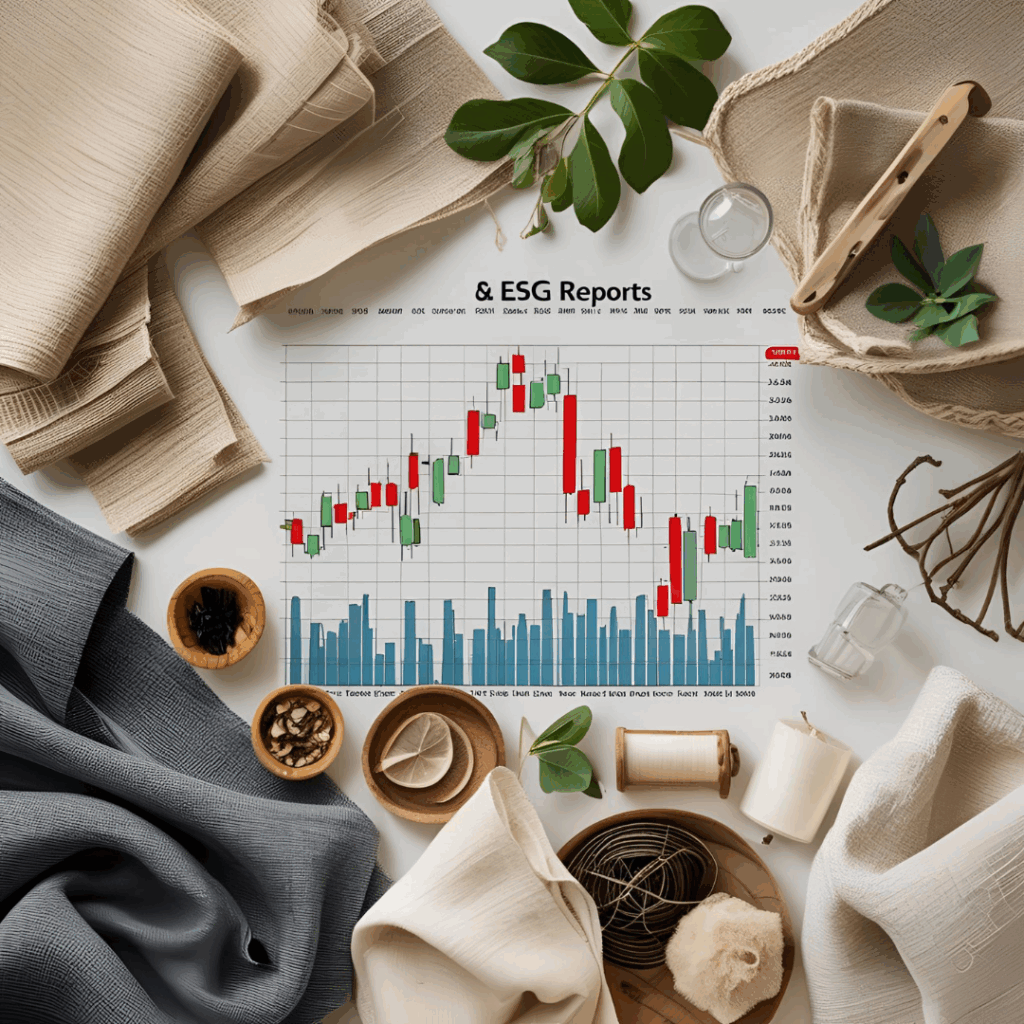The fashion industry is undergoing a profound transformation. Ethical fashion — characterized by biomimetic design, exploitation-free aesthetics, and strong connections to nature — is no longer just a niche or a trend. It is becoming a valuable asset class attracting savvy ESG investors worldwide.
This article explores how brands with natural aesthetics gain market value and investor trust, why ethical fashion is proving to be a smart investment, and how these companies outperform over time.
🌱 What Is Ethical Fashion and Why Does It Matter?
Ethical fashion refers to clothing and accessories produced with environmental sustainability, fair labor practices, and animal welfare at its core. The rising consumer demand for transparency and responsibility is driving this movement.
Key characteristics include:
- Biomimetic design: inspired by nature’s forms and functions, optimizing resources and minimizing waste.
- Exploitation-free aesthetics: no animal cruelty, no sweatshop labor, and focus on human rights.
- Use of natural fibers, organic dyes, and circular production models.
This approach not only addresses social and environmental challenges but creates strong emotional connections with consumers — a critical factor for brand longevity and value appreciation.
🦋 The Rise of Brands That Use Animal and Nature References
Brands integrating animal motifs and natural imagery in their designs create unique identities that resonate deeply with consumers seeking meaning beyond fashion.
Here are 10 brands leading this trend with proven growth trajectories:
- Stella McCartney – Pioneer in luxury cruelty-free fashion.
- Veja – Sustainable sneakers made with natural materials.
- PANGAIA – Innovative biomaterials and plant-based dyes.
- Reformation – Known for transparency and ecological impact.
- Allbirds – Eco-friendly shoes with natural fibers.
- Matt & Nat – Vegan bags and accessories.
- Outerknown – Surf-inspired sustainable clothing.
- Patagonia – Environmental activism integrated into business.
- TALA – Affordable sustainable activewear.
- Nanushka – Blends natural aesthetics with ethical production.
These brands combine design authenticity with ESG principles, creating strong equity and attracting institutional investors.
📈 How Ethical Fashion Brands Build Market Value Over Time
Several factors explain why ethical fashion brands gain value and outperform traditional companies:
- Consumer Loyalty: Ethical values create a committed customer base willing to pay premium prices.
- Regulatory Advantage: Ahead of tightening regulations on pollution and labor rights, these brands face fewer legal risks.
- Investor Appeal: ESG-focused funds prioritize companies with sustainable business models, enhancing access to capital.
- Innovation: Use of biomimicry and circular economy approaches reduces costs and improves supply chain resilience.
- Reputation and Branding: Transparency and ethical messaging build brand equity and reduce reputational risks.

This combination fosters a virtuous cycle where sustainability drives profitability, which in turn fuels growth and valuation.
What Is Biomimetic Design and Why Investors Love It
Biomimetic design is the practice of emulating nature’s time-tested patterns and strategies in product development. In fashion, this means:
- Designing clothes that use less water and fewer chemicals.
- Creating materials inspired by plant and animal structures for durability and function.
- Developing closed-loop production to minimize waste.
For investors, biomimicry signals innovation and long-term sustainability, making these brands less vulnerable to resource scarcity and environmental legislation.
Measuring the ESG Impact of Ethical Fashion Brands
Measuring sustainability impact is critical to avoid greenwashing and ensure genuine investment value.
Investors look at:
- Environmental footprint: water use, carbon emissions, waste management.
- Social factors: fair wages, workplace safety, community impact.
- Governance: board diversity, transparency, ethical sourcing.
Ratings by agencies like MSCI ESG, Sustainalytics, and indexes such as the Fashion Revolution Transparency Index provide benchmarks that correlate with financial performance and investor confidence.
🌍 Examples of Ethical Fashion in Action and Market Performance
- Stella McCartney consistently ranks high on ESG metrics and maintains robust revenue growth, driven by loyal customers and global luxury distribution.
- Veja became a darling of sustainable investing after launching eco-friendly sneaker lines with traceable materials.
- PANGAIA recently secured multi-million-dollar funding rounds, showcasing how innovation and ethics attract venture capital.
These success stories demonstrate that ethical brands are no longer just “good causes” but powerful economic players.
🛍️ How to Identify Truly Ethical Brands: Avoiding Greenwashing
For investors and consumers, differentiating real ethical brands from marketing hype is crucial.
Look for:
- Full supply chain transparency — from raw materials to retail.
- Certifications like GOTS (Global Organic Textile Standard), Fair Trade, B Corp.
- Evidence of circular economy initiatives — recycling, upcycling, take-back programs.
- Independent third-party audits and public ESG reports.
Brands lacking these are at higher risk of being unsustainable investments.
💰 Why Ethical Fashion Is a Growing Focus for ESG Funds
Sustainable investing assets reached $40 trillion globally in 2023, with fashion gaining attention as a major polluter and social influencer.
ESG funds prioritize:
- Scalable sustainable businesses with clear growth strategies.
- Companies that engage consumers authentically.
- Firms that proactively manage environmental and social risks.
Ethical fashion brands fit these criteria, making them prime targets for long-term capital.
🔮 The Future of Ethical Fashion Investment
With increasing awareness of climate change, animal welfare, and social justice, ethical fashion is positioned for sustained growth.
Analysts predict:
- Expansion of ESG funds dedicated to fashion and lifestyle sectors.
- More IPOs and funding rounds for brands innovating in natural materials and biomimicry.
- Heightened consumer activism driving brand accountability and transparency.
Early investors in this space stand to benefit from rising valuations and a more conscious global economy.
Ethical Fashion as a Smart, Purposeful Investment
Ethical fashion goes beyond trends — it is a transformative movement linking design, sustainability, and profit.
For investors, brands that integrate natural aesthetics, biomimetic innovation, and fair practices offer:
- Reduced risks
- Increased consumer loyalty
- Strong growth potential
- Alignment with global ESG goals
Investing in these companies means not just financial returns but also supporting a future where fashion respects people, animals, and the planet.







